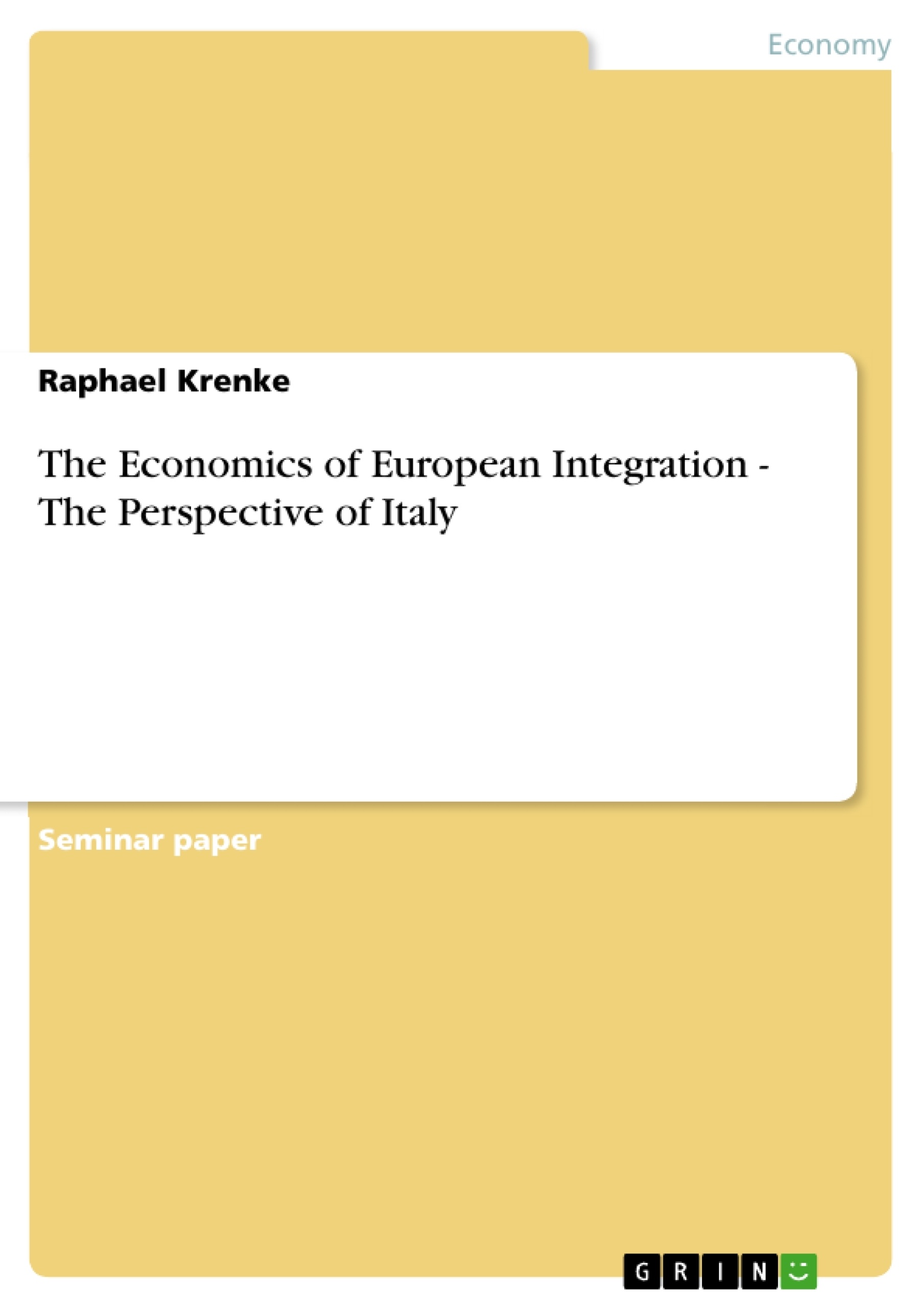After a successful launch of the Euro and some beneficial years for the countries in the European Monetary Union enjoying low interest rates, the bankruptcy of Lehman Brothers in 2008 triggered a global financial and economic crisis which especially in the European Monetary Union turned into a sovereign debt crisis. Based on the ninth edition of Paul De Grauwe’s book “Economics of Monetary Union”, this paper analyzes Italy’s economic development in the last years and shows the benefits and costs for Italy of being in the European Monetary Union with special regard to Robert Mundell’s theory of optimum currency areas (OCA-theory) (1961), the occurrence of asymmetric tendencies/shocks, their relevance for the country, and the question of overcoming of those shocks.
In the end a clear answer is given if it was a good or a bad decision for Italy and its economy to join the European Monetary Union.
Inhaltsverzeichnis (Table of Contents)
- Abstract
- Introduction
- The Research Question
- The Theory of Optimum Currency Areas
- Country Overview
- Asymmetric tendencies/shocks in Italy
- GDP development
- Competitiveness
- Current Account Balance
- Unemployment
- State budget and indebtedness
- Long-term Interest Rates
- Sustainability of the current budget deficit shock
- Ways to overcome the crisis
- Measures taken to overcome the crisis
- Conclusion
Zielsetzung und Themenschwerpunkte (Objectives and Key Themes)
This paper analyzes Italy's economic development in recent years, focusing on the benefits and costs of its membership in the European Monetary Union (EMU). Drawing on the theory of optimum currency areas (OCA), the paper explores the impact of asymmetric shocks on Italy's economy, its ability to overcome those shocks, and ultimately, whether joining the EMU was a wise decision for Italy.
- The benefits and costs of EMU membership for Italy
- The role of asymmetric shocks and their impact on Italy's economy
- The theory of optimum currency areas and its application to Italy's situation
- The sustainability of Italy's current budget deficit and indebtedness
- The effectiveness of measures taken to overcome the crisis
Zusammenfassung der Kapitel (Chapter Summaries)
- Abstract: This chapter briefly introduces the topic of the paper, outlining the research question and key findings. It highlights the impact of the global financial crisis on the EMU, focusing specifically on the sovereign debt crisis that has affected Italy.
- Introduction: This chapter introduces the concept of economic integration and its benefits, particularly the advantages of a common currency. It outlines the history of the EMU and Italy's decision to adopt the Euro, emphasizing the potential for benefits like reduced transaction costs and policy credibility. However, it also highlights the possibility of negative consequences, particularly in the case of asymmetric shocks.
- Asymmetric tendencies/shocks in Italy: This chapter presents a comprehensive analysis of Italy's economic performance since joining the EMU, examining various indicators including GDP growth, competitiveness, current account balance, unemployment, state budget, and long-term interest rates. It highlights trends and fluctuations in these areas, demonstrating the presence of asymmetric shocks that have negatively impacted Italy's economy.
- Sustainability of the current budget deficit shock: This chapter explores the potential implications of Italy's growing budget deficit and high indebtedness, drawing on the theory of optimum currency areas and investors' expectations. It discusses the concept of "good" and "bad" equilibria, examining the factors that influence the risk of a sovereign default and the likelihood of a self-fulfilling prophecy.
- Ways to overcome the crisis: This chapter delves into possible solutions to Italy's economic challenges, exploring the effectiveness of various strategies such as increased competitiveness through wage flexibility and labor mobility. It examines the limitations of these approaches in Italy's specific context, highlighting the importance of government austerity measures and the role of institutions like the European Stability Mechanism (ESM).
- Measures taken to overcome the crisis: This chapter analyzes the fiscal austerity packages implemented by the Italian government to address the budget deficit and debt. It examines the impact of these measures on various economic indicators and their potential effectiveness in mitigating the crisis, emphasizing the importance of maintaining investor trust and ensuring sufficient liquidity for the Italian economy.
Schlüsselwörter (Keywords)
The paper focuses on key concepts related to the economics of European integration, particularly the effects of asymmetric shocks on the Italian economy within the EMU. Key themes include the theory of optimum currency areas, competitiveness, unit labor costs, current account balance, unemployment, state budget, government debt, long-term interest rates, austerity measures, and the European Stability Mechanism.
- Quote paper
- Raphael Krenke (Author), 2013, The Economics of European Integration - The Perspective of Italy, Munich, GRIN Verlag, https://www.grin.com/document/210097



